In Part 1 of this series, I was exploring the different black & white stocks I had in my Lightroom Library, looking at things I had already shot to try to see the impact that a film stock has on the quality of the photos. In Part 2 I was cleaning out my refrigerator, using up the various films I had on hand including some ‘off the beaten path’ stocks I had ordered one day when I was feeling adventuresome. For Part 3 I have been shooting films that I bought specifically with this series in mind to round out my ‘grand tour’ of the major commercially available film stocks.
I’ll start with Kodak TMax 100. I’m not sure why it took this long for me to get around to TMax 100. I may have had a 40 year old recollection of not loving Kodak’s 100 ISO reversal 16mm motion picture film (Plus X?), which was low contrast compared to Tri-X. Also, Ilford has such a wide range of B&W options that I suppose I just gravitated in that direction. Or maybe the Ilford fridge was in a more prominent spot at the local Canadian camera store?
Enough waffle, here’s some TMax 100…
This shot, taken at the Rockefeller Preserve, is a favorite view that I’ve taken quite a few times in different seasons and different conditions. I like the ghostly quality of the early spring leaves that were just emerging when I shot this.
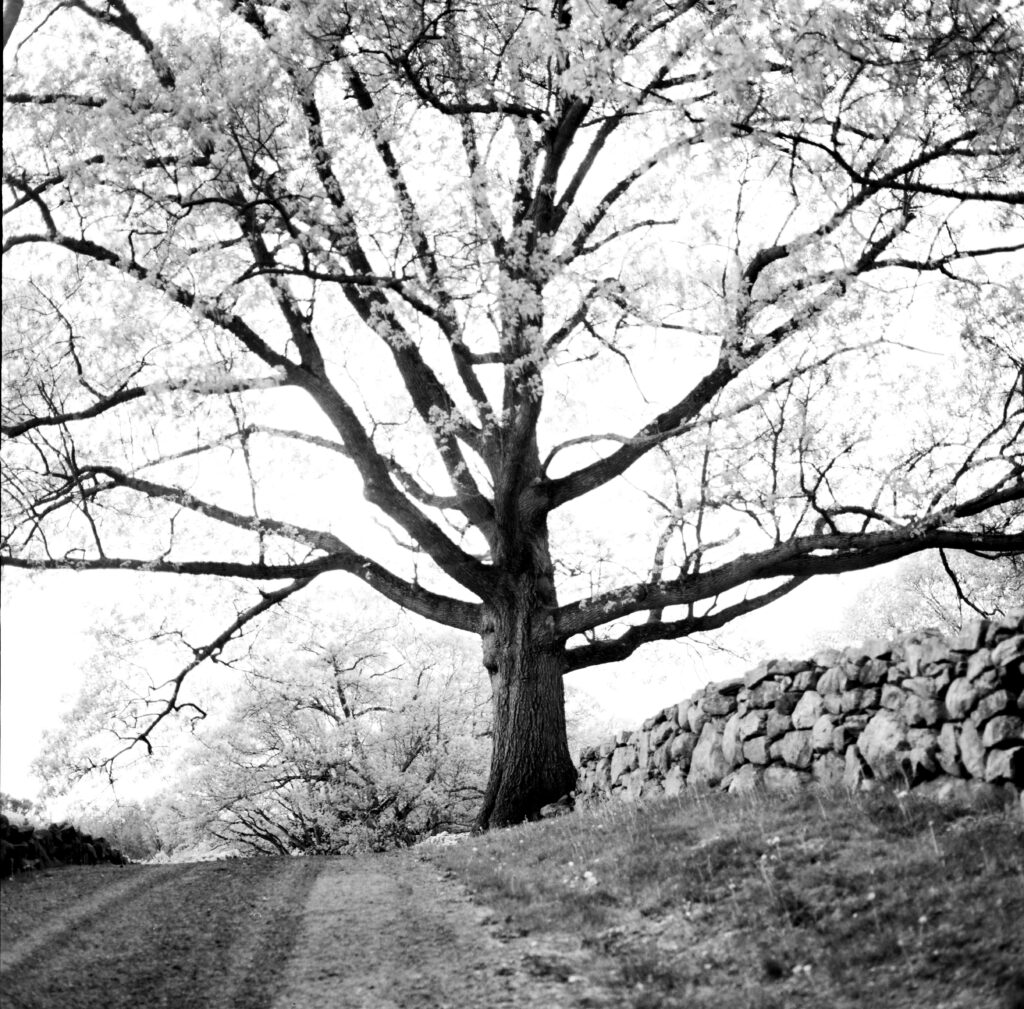
The Rockefeller Preserve was formerly the dairy farm that supplied the Rockefeller estate. There are still dairy cows and other livestock that are part of its current incarnation as a food foundation and home of Blue Hill at Stone Barn, a very well known high end restaurant.
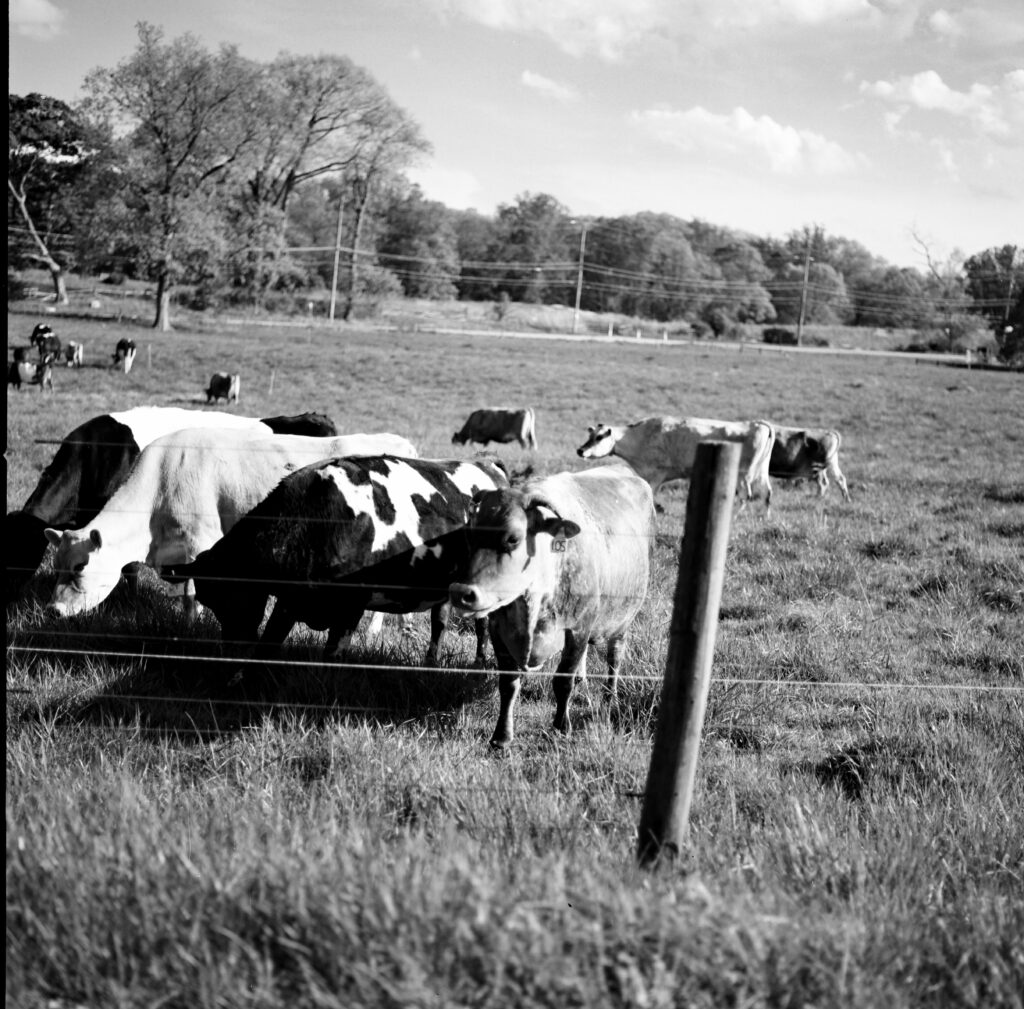
This is an accidental double exposure of the back of the Rockefeller’s stone barn that houses the restaurant. It was one of the more interesting frames from that roll of film.
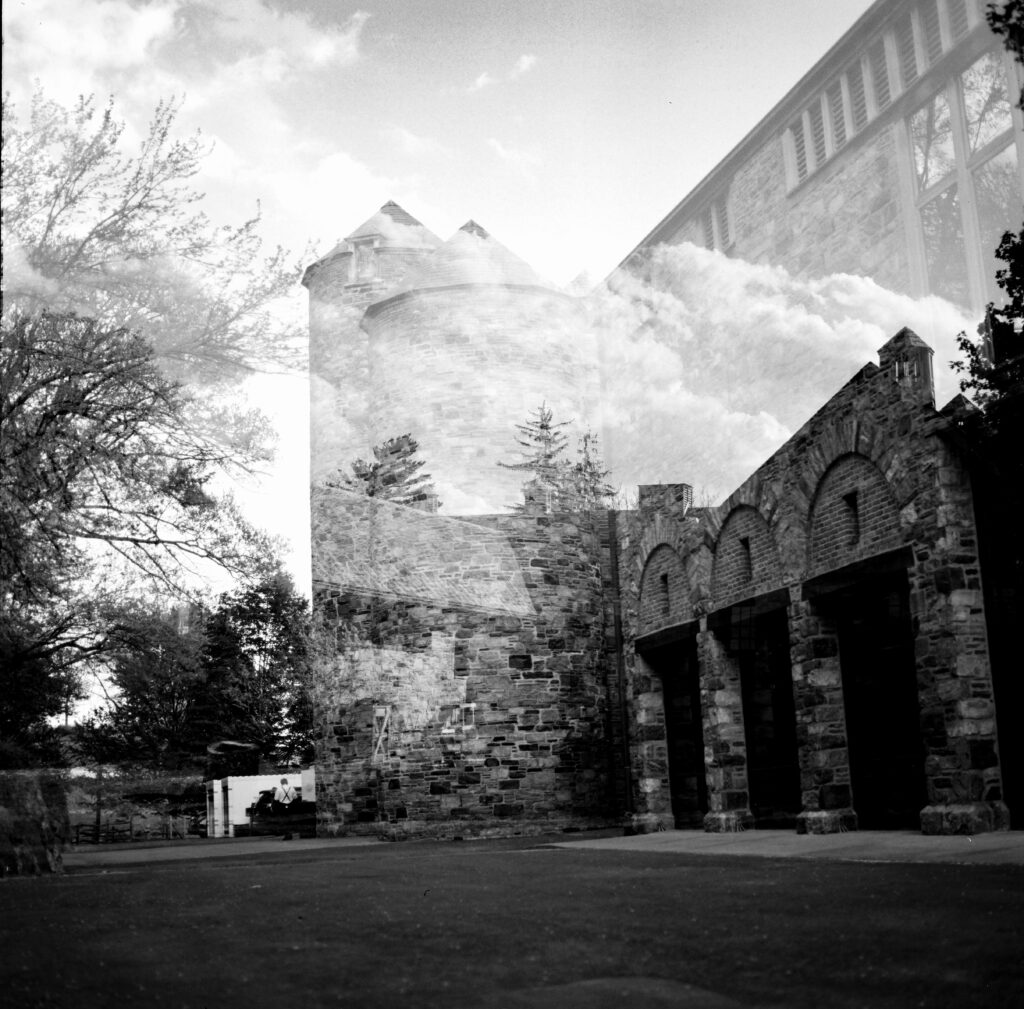
I’ll confess, I may have been having a ‘bad day at the office’ when I shot TMax 100. I don’t think I always stuck the landing on focus and exposure, and most of the shots feel a bit mundane or things I’ve done better before. It’s possible that I was starting to get a little ‘snowblind’ from shooting so many different film stocks in generally similar locations and conditions. In any event, TMax 100 may have to wait for a better day or a better photographer to show its true potential.
Going from the “Route One” option of a major Kodak emulsion to something further out on the fringe, I decided to try a roll of Rollei Infrared 400, just to see what it was all about. It’s far from conventional with the combination of almost black skies and white foliage. Because these shots were largely about sky and trees, I wanted to see as much of them as possible, so I framed ‘vertical’ and used my widest lens, a 1958 Super Angulon 21mm f4.
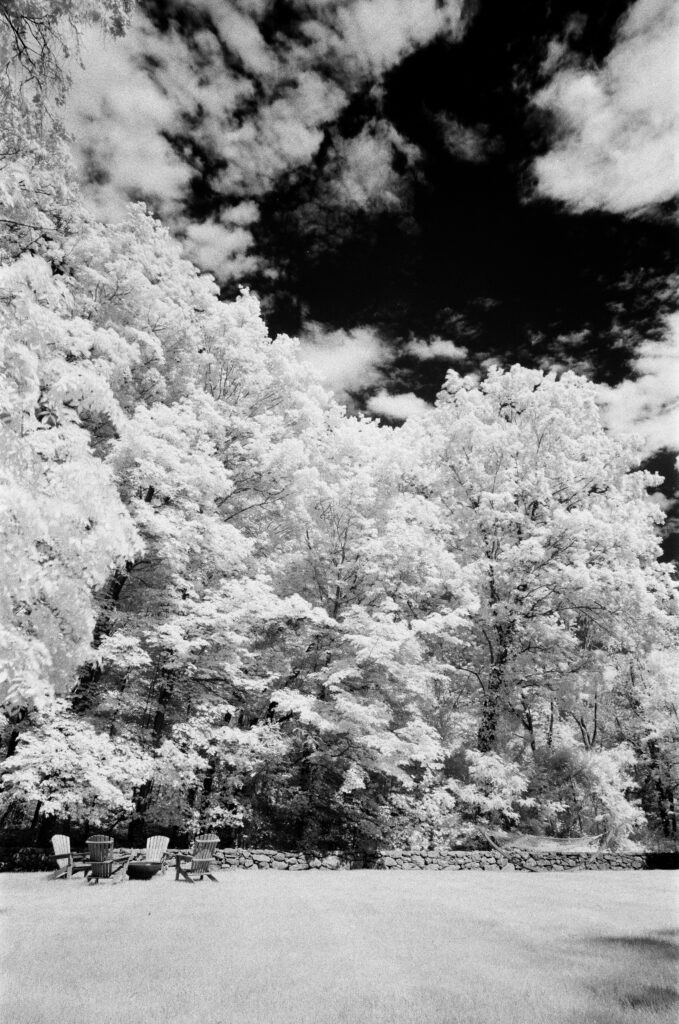
Some shots, like this jet black swimming pool reflecting a row of paper white trees can feel a little bit like a 1960’s psychedelic experiment or a dream sequence from a Sam Fuller movie.
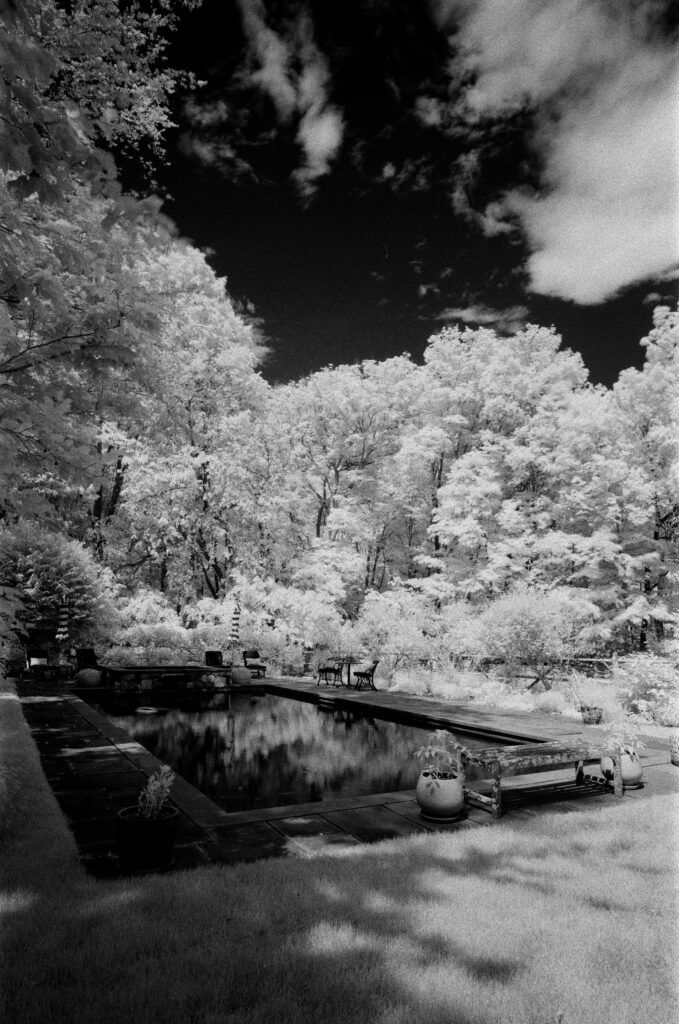
I couldn’t find anything in the packaging or online to give me a precise measure of how to compensate for the IR filter I was using so I tried holding the filter in front of my iPhone’s light meter app. This highly scientific technique made it look like the filter reduced the EV by 10 stops, but I wasn’t terribly confident, so I tried bracketing and between 8 seconds, 4 seconds and 1 second exposures on this roll.
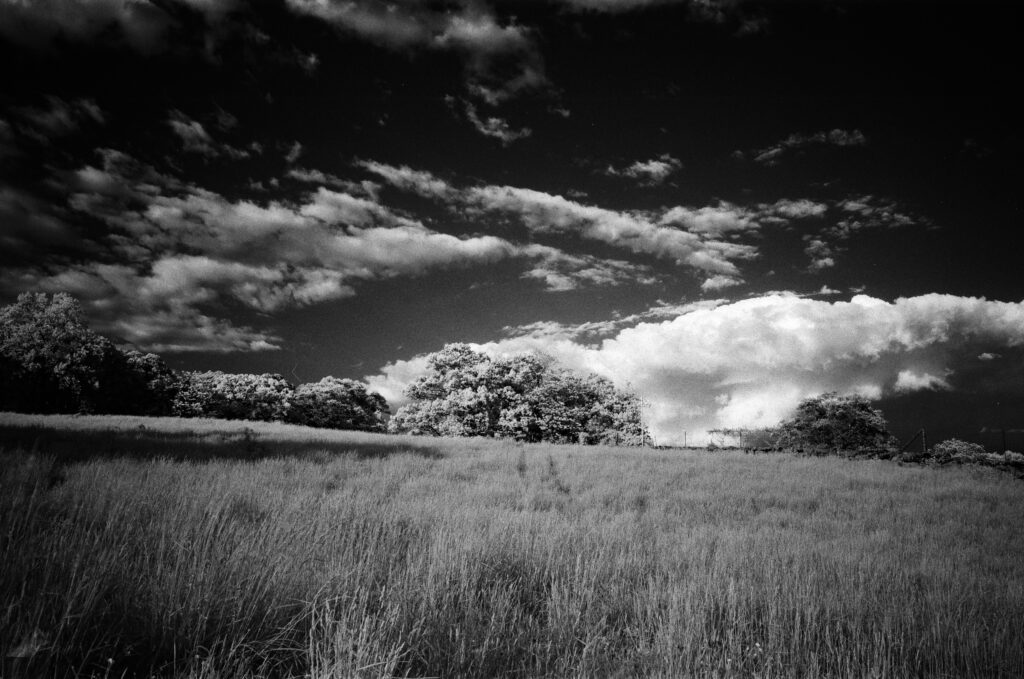
Some of these bracketed results weren’t quite as ‘trippy’ as others, but I think Infrared might be something to try once in a great while as opposed to a regular in my arsenal of film stocks.
While I was checking out the Infrared end of the spectrum, I ran a roll of Ilford SFX 200 through the Hasselblad.
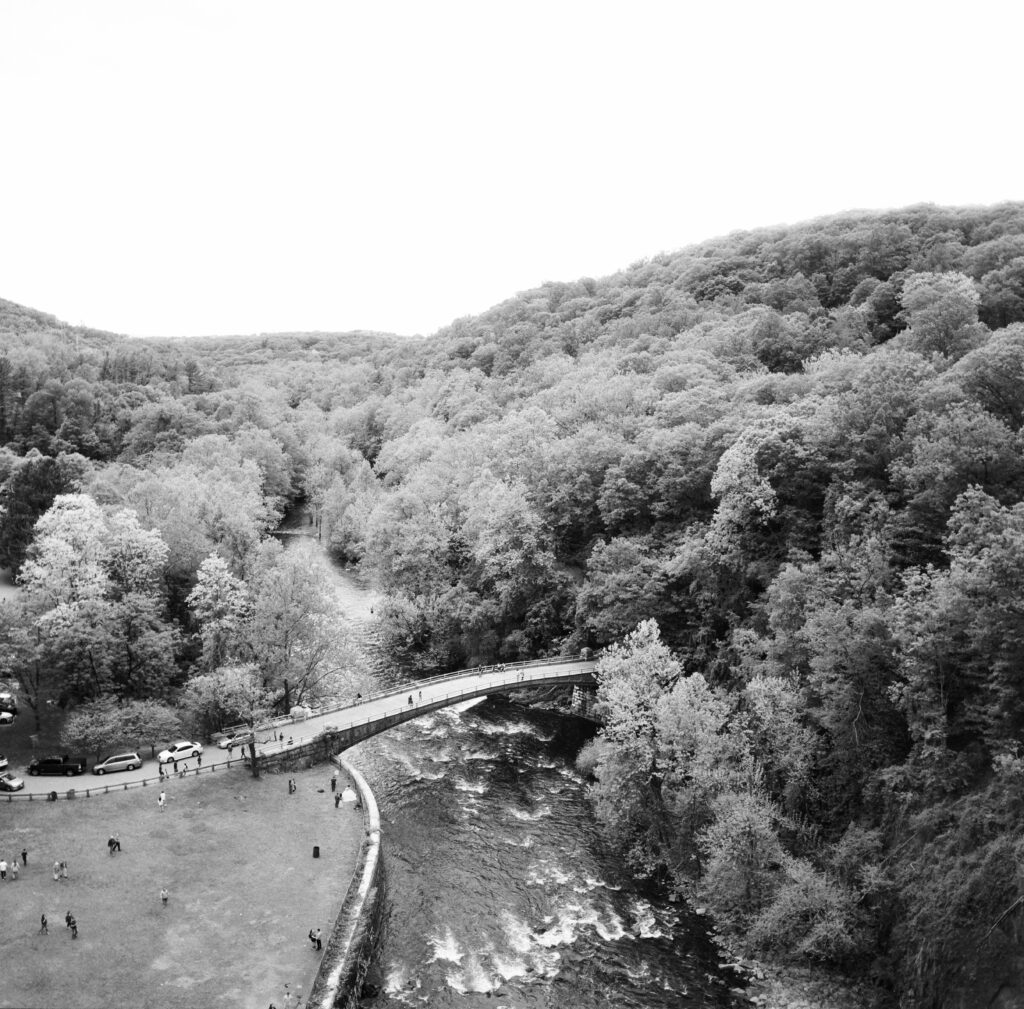
SFX dips a toe into the infrared wavelengths, and you can see the foliage is a bit lighter here than usual, but not in the range of the Rollei IR.
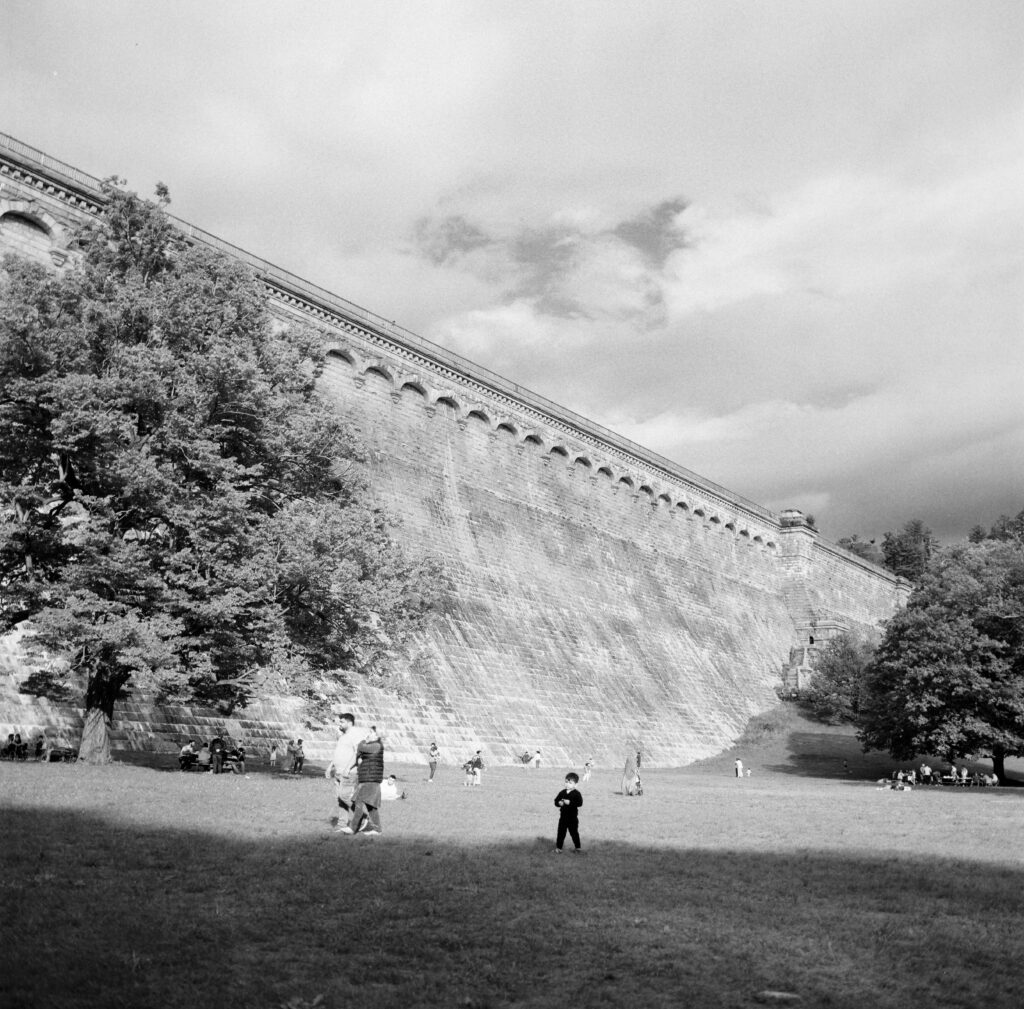
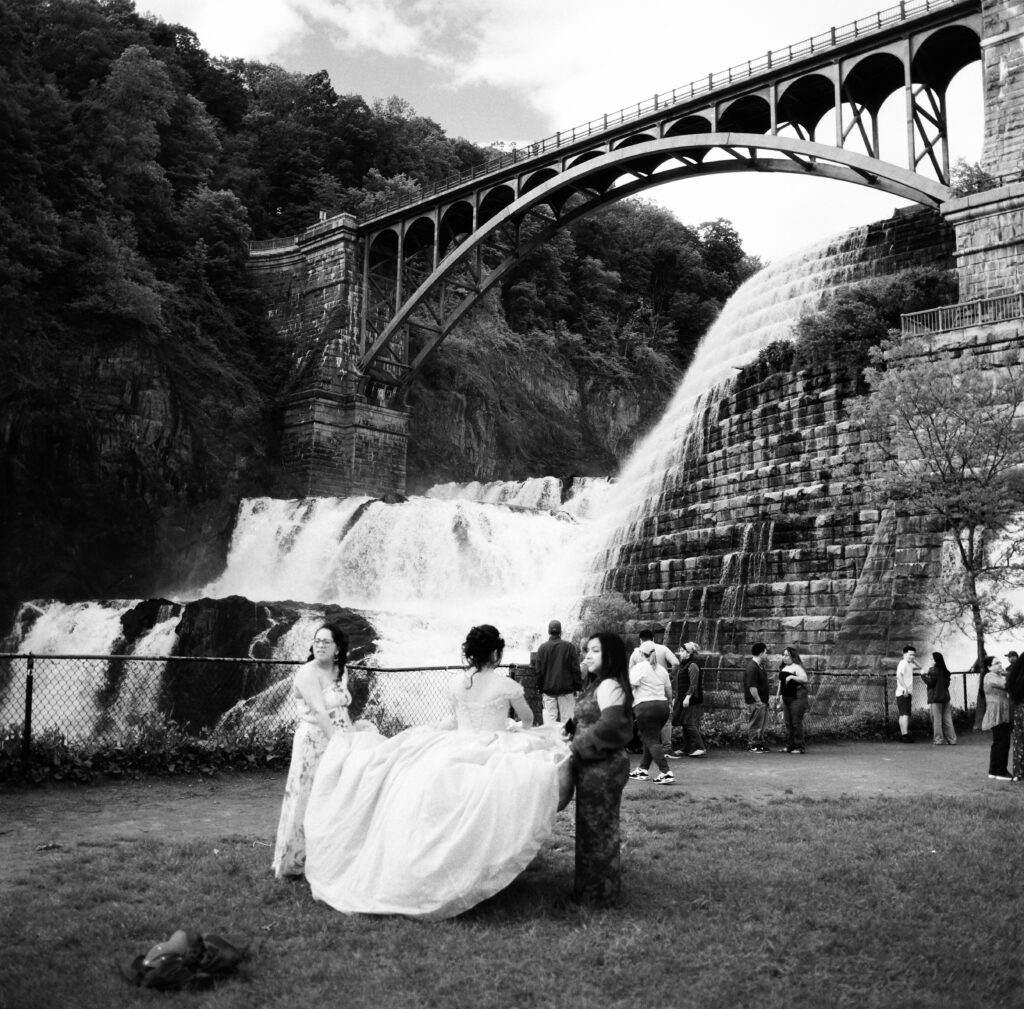
I think SFX has an interesting look and gives a bit of atmosphere without feeling like a waking dream/’daymare’, like the Rollei IR. I have a roll of SFX on 35mm that I might try out at some point, but I’d have to think about when I’d get the most value out of its particular qualities.
Getting back to “bad days at the office”, there must have been something wrong at some point in the workflow with this roll of Fompan Action 400.
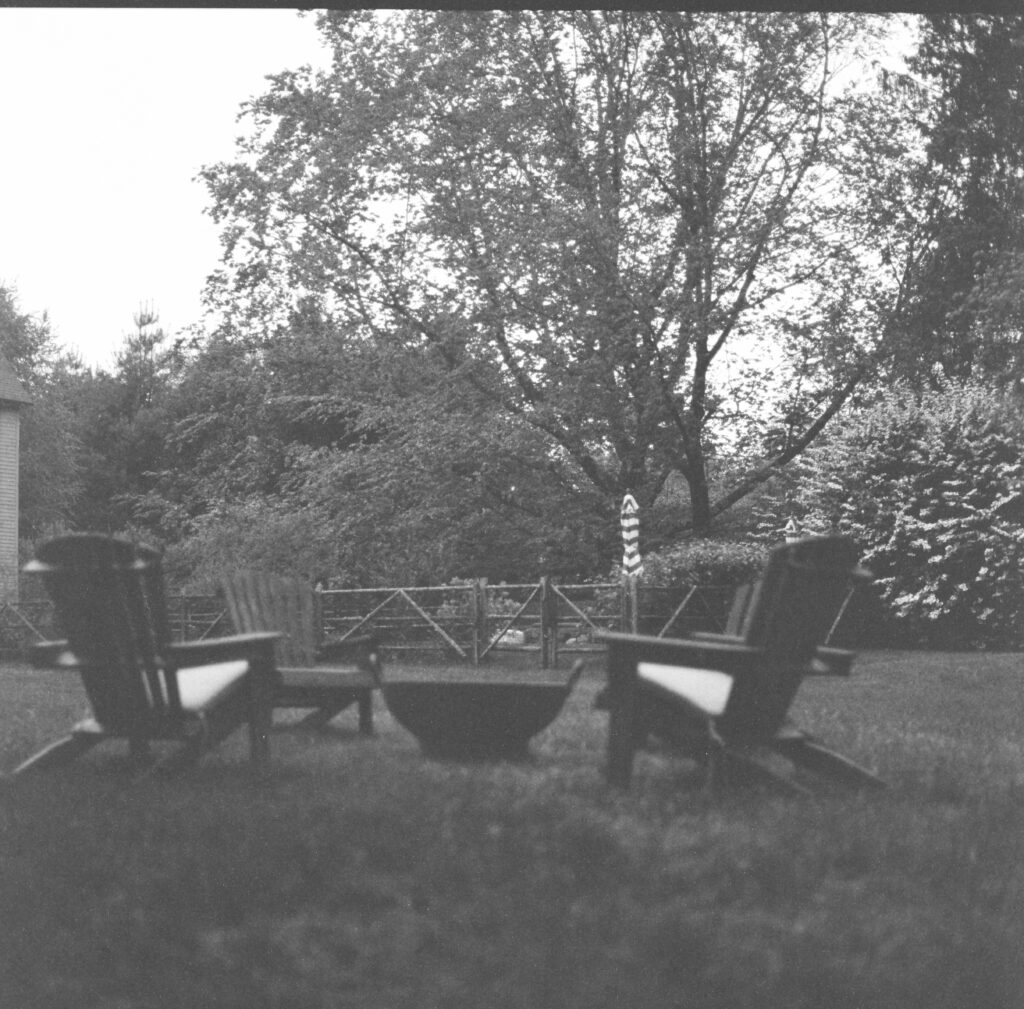
While I was using the same metering technique that I’ve been using for everything else I shoot these days, some shots definitely looked underexposed. But even the ones that weren’t overly dark came back looking grainy and kind of flat without deep blacks or strong highlights. Admittedly it was a cloudy day which may have contributed to the lack of contrast, but I’ve shot on cloudy days many times on other stocks with more satisfying results.
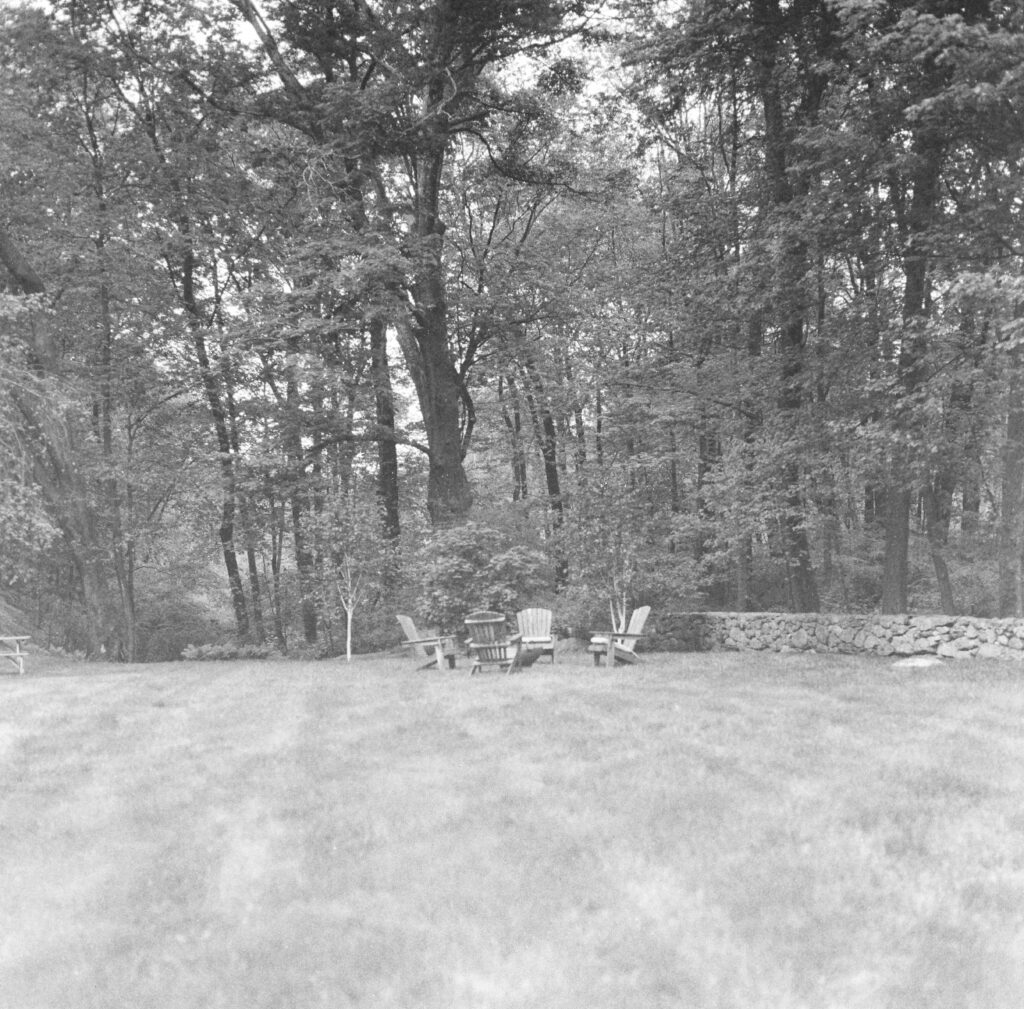
I’ve seen some very nice images shot on Fomapan, so I’m not sure if it was me or something with that happened to that particular roll somewhere between the Czech Republic and the lab, but there wasn’t a single shot that looked good to me. I also tried a roll of Fomapan 200 Creative shooting side-by-side in the same location and lighting. It came back a little better than the 400 Action, but still not particularly exciting (possibly due to a bit of a lackluster image.)
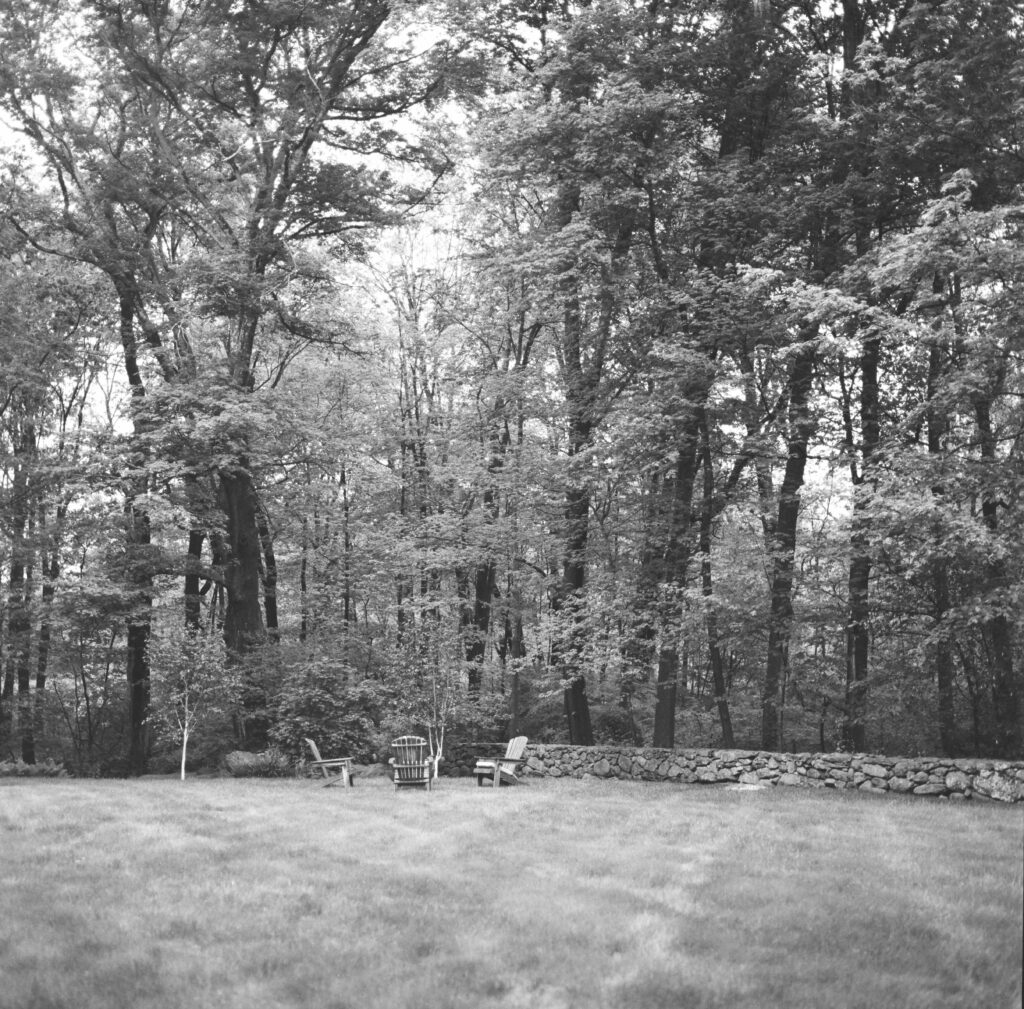
I still had the 200 Creative in the Hasselblad on my next outing to the Donald Kendall Sculpture Garden and the results were dramatically different.
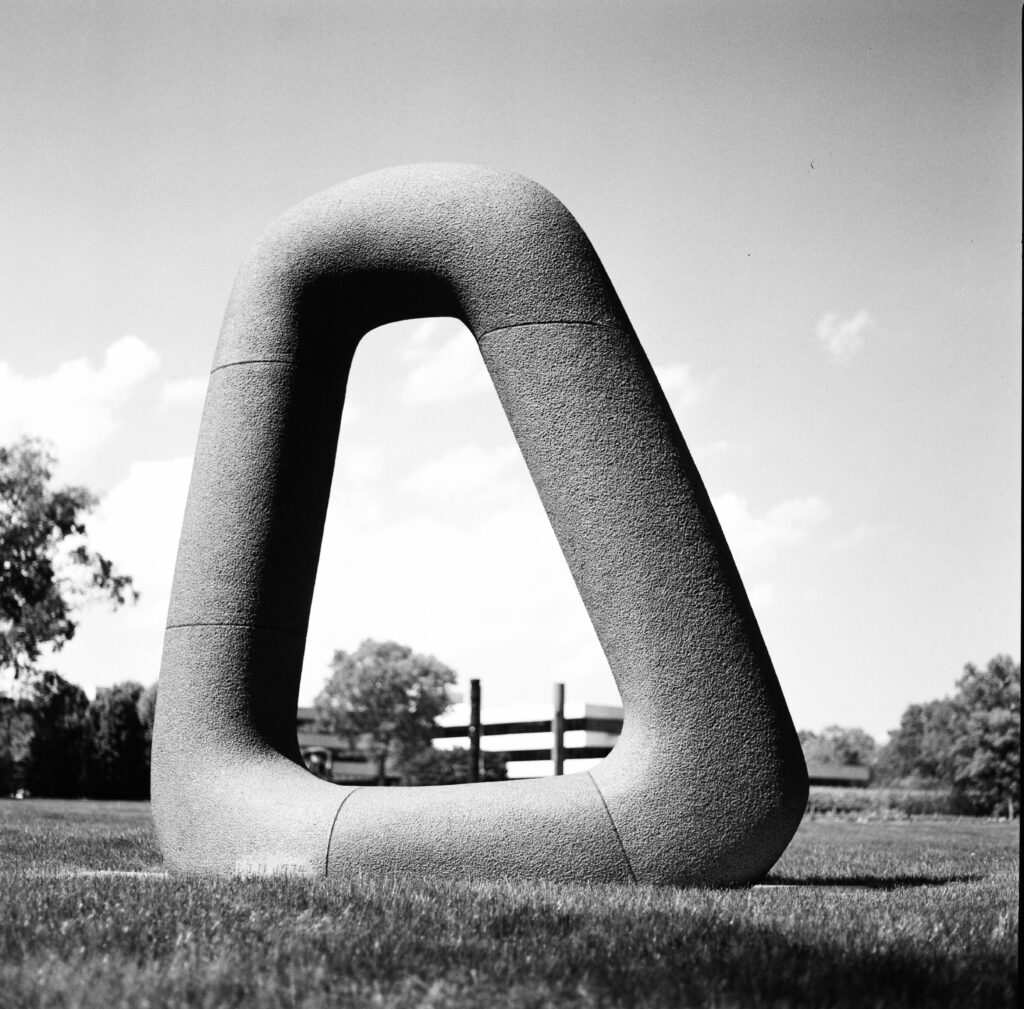
It’s hard to believe these shots are on the same film and the same roll as the other shots from our back yard. They are very sharp with great contrast, nice detail and fine grain.
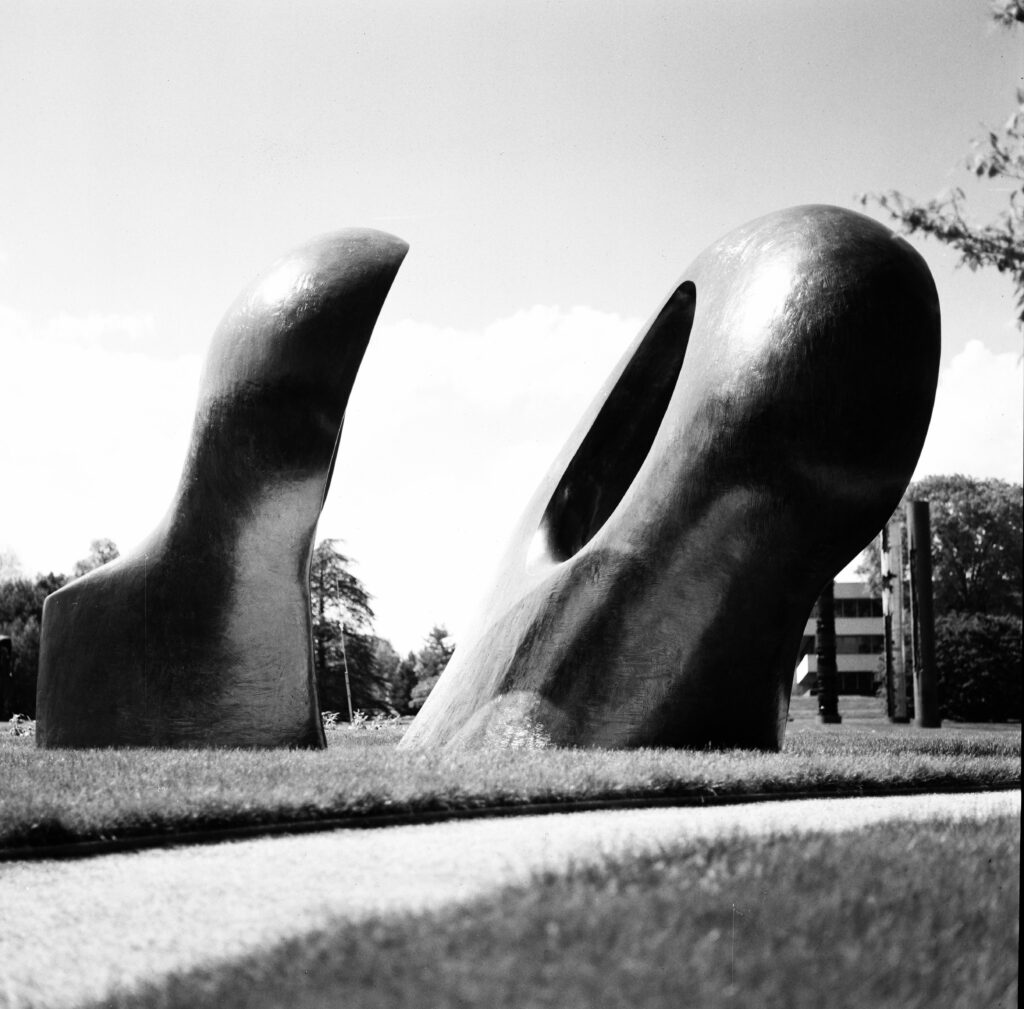
Fomapan Creative 200 looks great on a sunny day with lots of inherent contrast in the image. It makes me wonder what was going on that cloudy day when I was shooting in the back yard. Could this stock be a bit of a ‘Fair Weather Friend”? Would Fomapan Action 400 undergo a similar dramatic transformation? Again, we might have to wait for a better photographer than me to do the Fomapan films justice.
I’m not sure if I ever would have tried Kentmere Film if not for embarking on this ‘project’ to sample most of the readily available commercial brands. A budget-friendly line by Harman Technology, makers of Ilford Film, I think I was probably nervous about using what I perceived as a lower end stock.
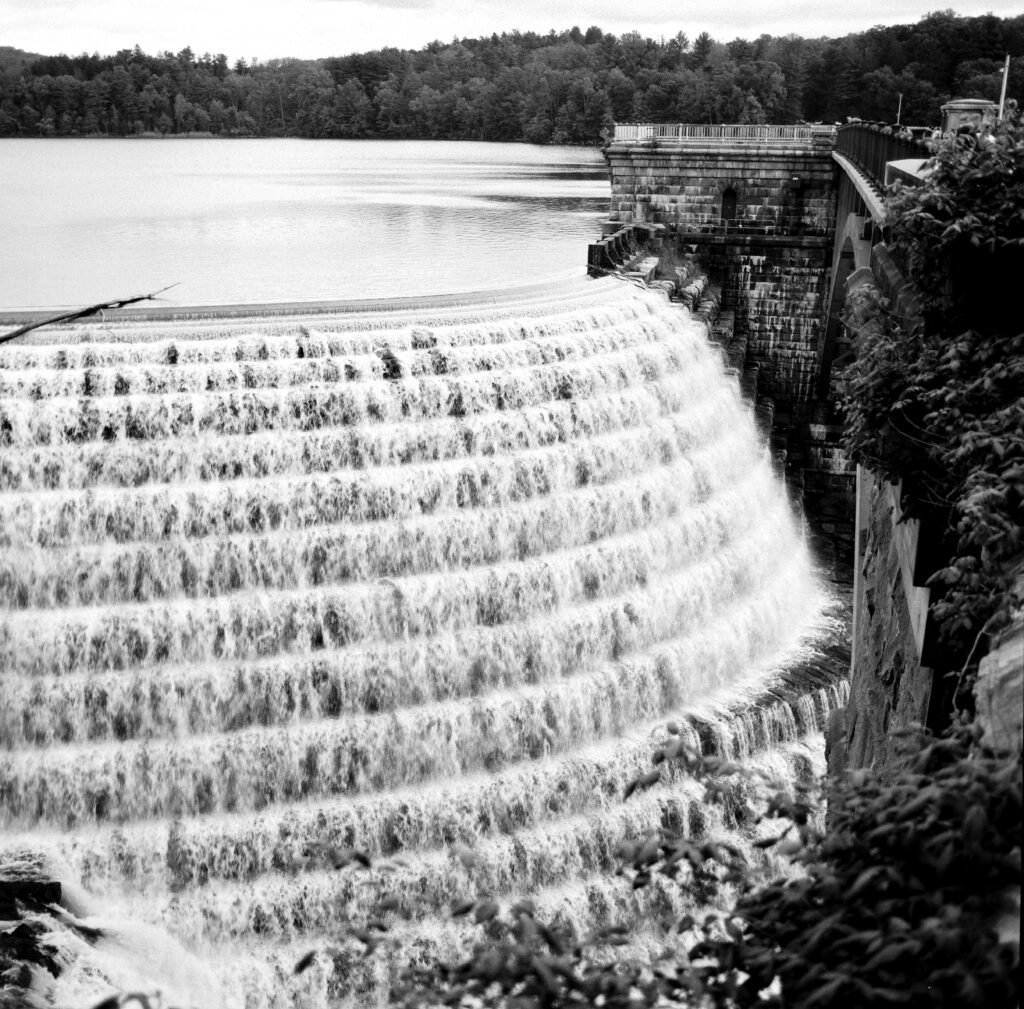
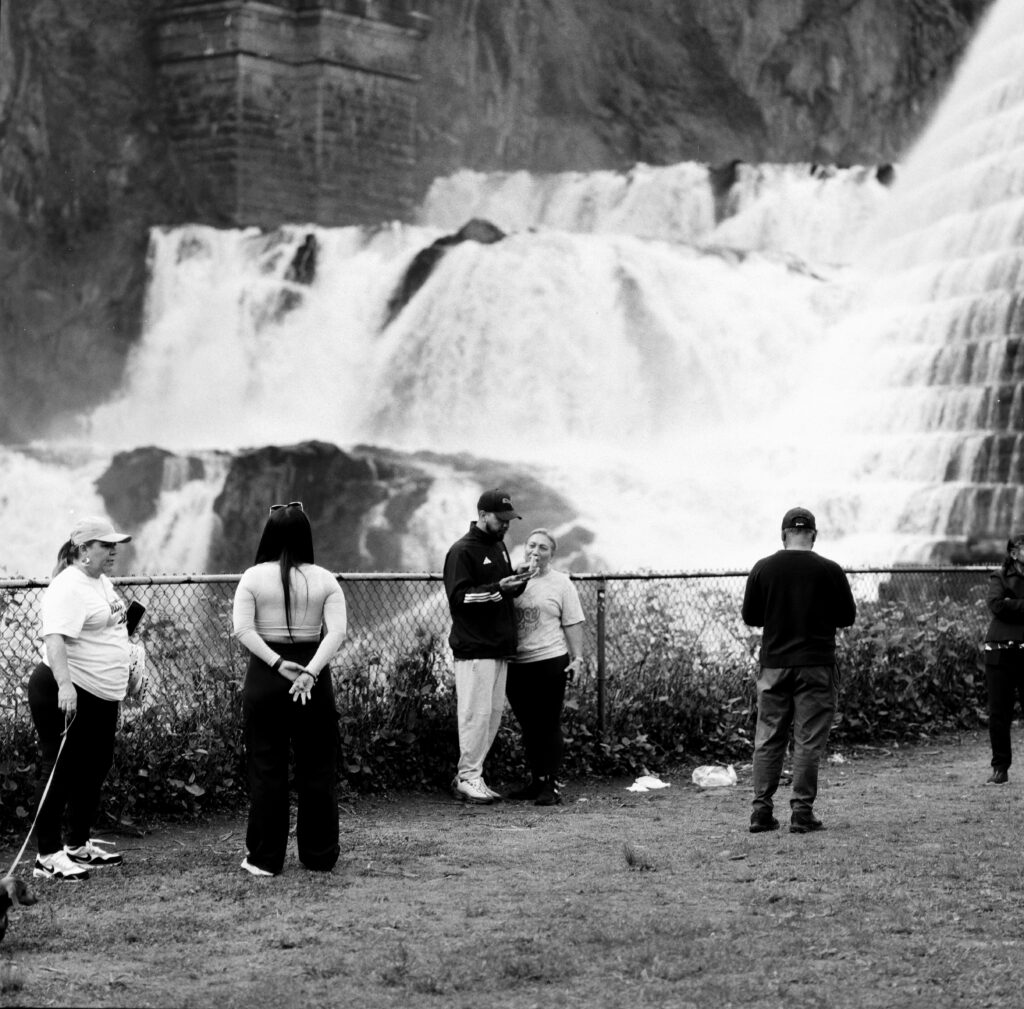
But I think these results on Kentmere Pan 100 compare favorably with some of the full price stocks I’ve sampled.
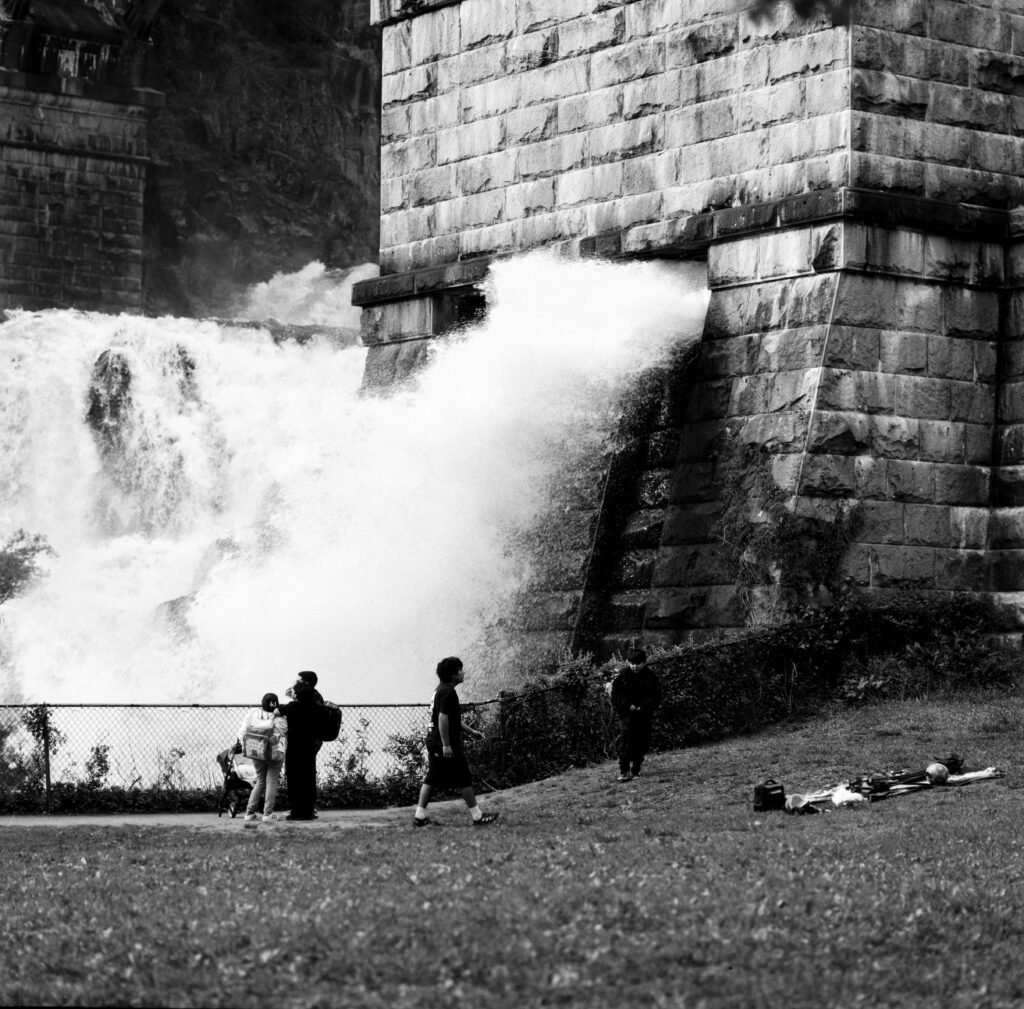
I also tried Kentmere Pan 400. By now, I’ve shot this Henry Moore installation on a handful of different films, and if I put them all side by side, I don’t think many people would guess that this was shot on a low cost stock about half the price of the others.
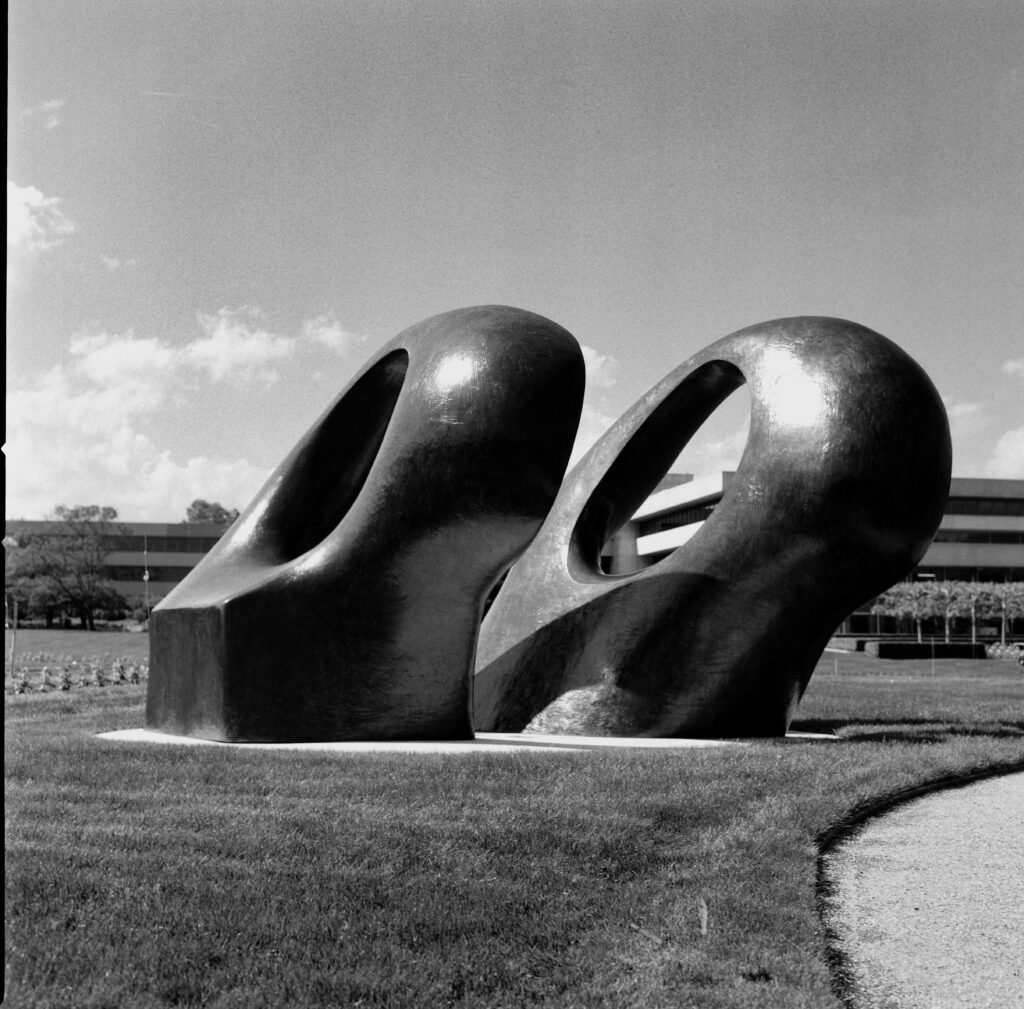
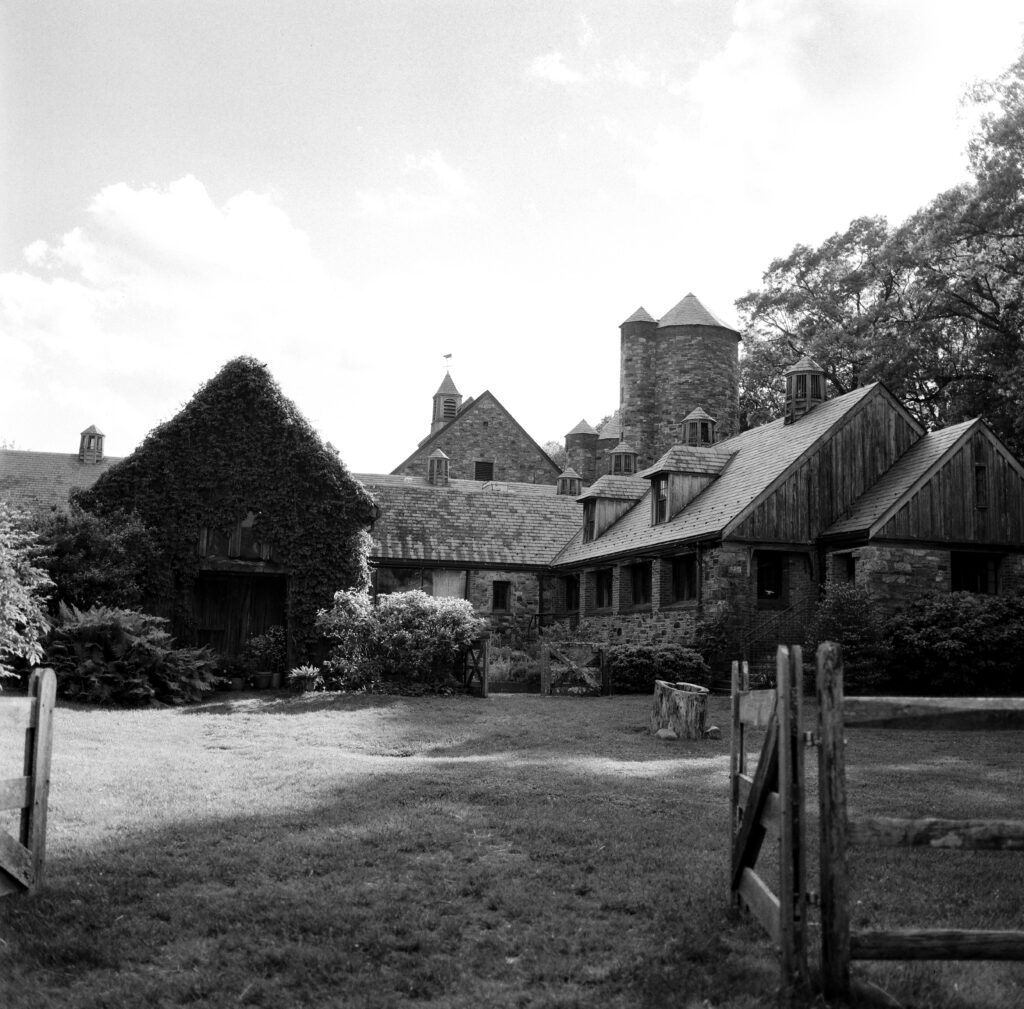
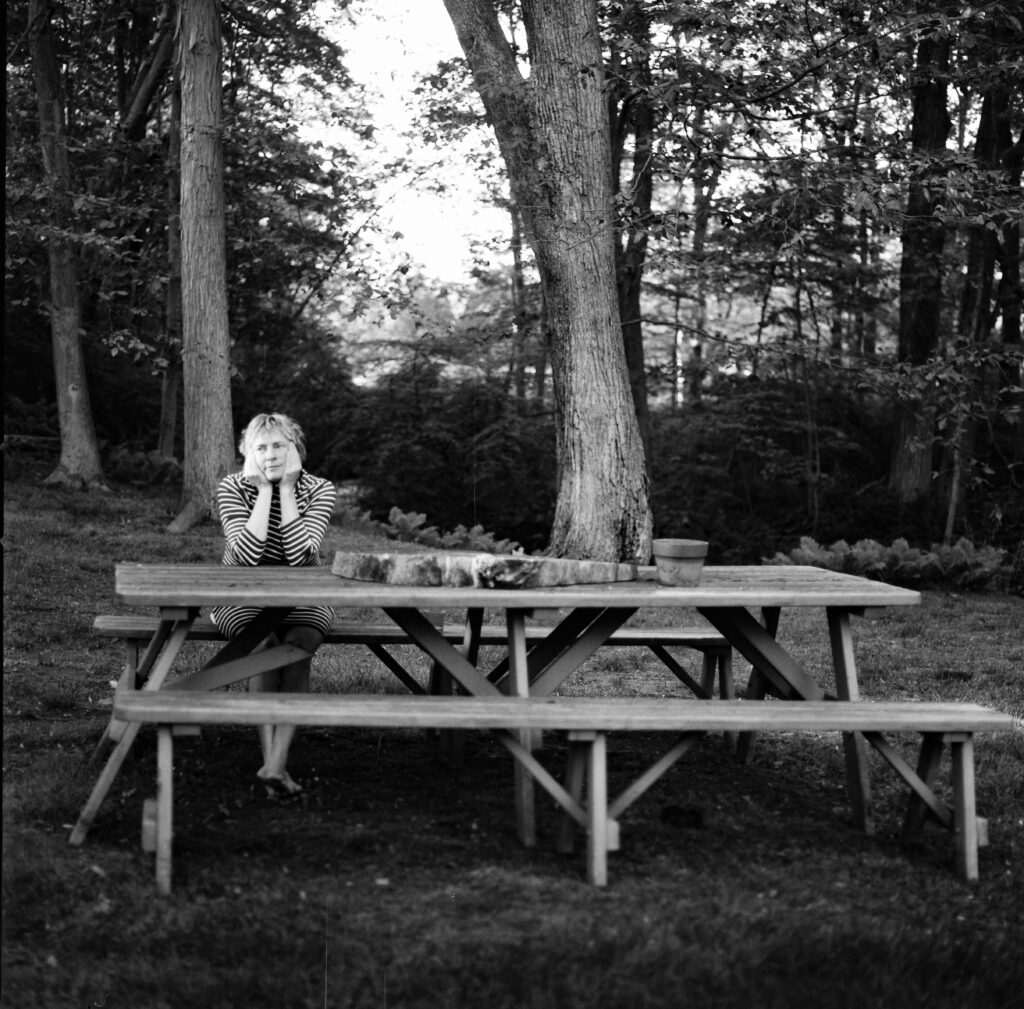
It’s hard to believe this is the same general location using the same camera as the earlier shots on Fomapan. Admittedly the conditions were different and better on this day, with a bit of late afternoon sunlight peaking through the foliage to add some highlights contrasted with some nice deeper blacks in the shadows. Again, Kentmere Pan 400 feels pretty competitive for a discount film and something I’ll definitely be using going forward!
Newsflash! While I was working on this series of posts about b&w films, Kentmere released a new 200 ISO stock, Kentmere PAN 200. I quickly grabbed a roll on 35mm to see if I could get it turned around in time to fit into this post, so here we go, just out of the lab…
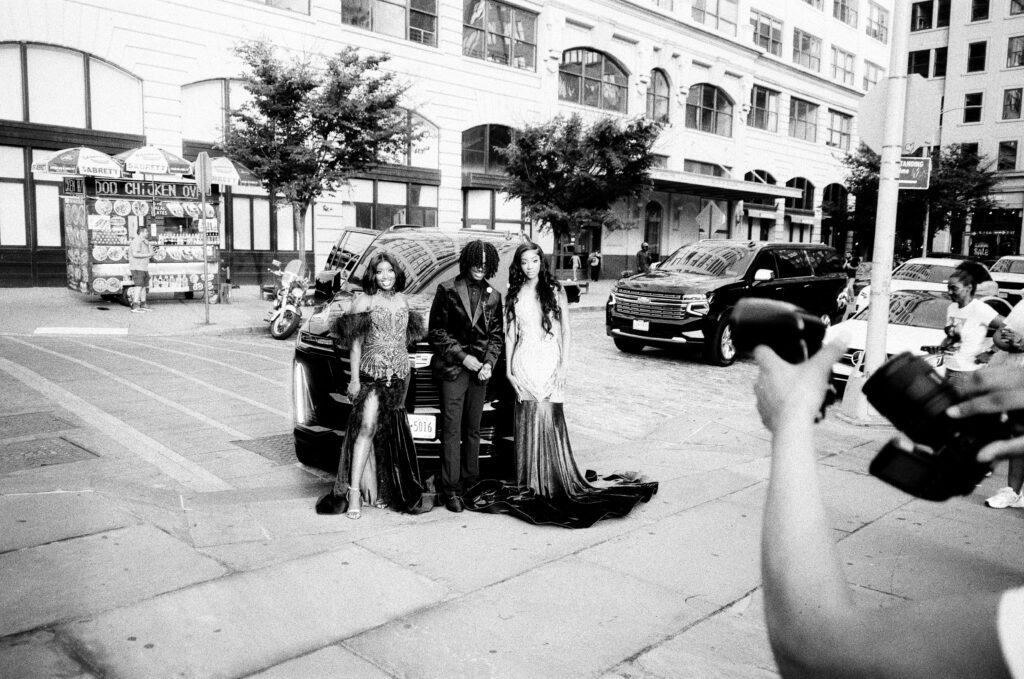
I took it out for a test drive near my place in Brooklyn, which is a big destination for photoshoots, including a wide range of professional shoots from wedding/special events to high end commercial/editorial, and a nearly infinite amount of personal and family photography from people with pretty high end kit to the ubiquitous iPhone selfies.
It’s nice to walk outside and see people happy and looking their best.
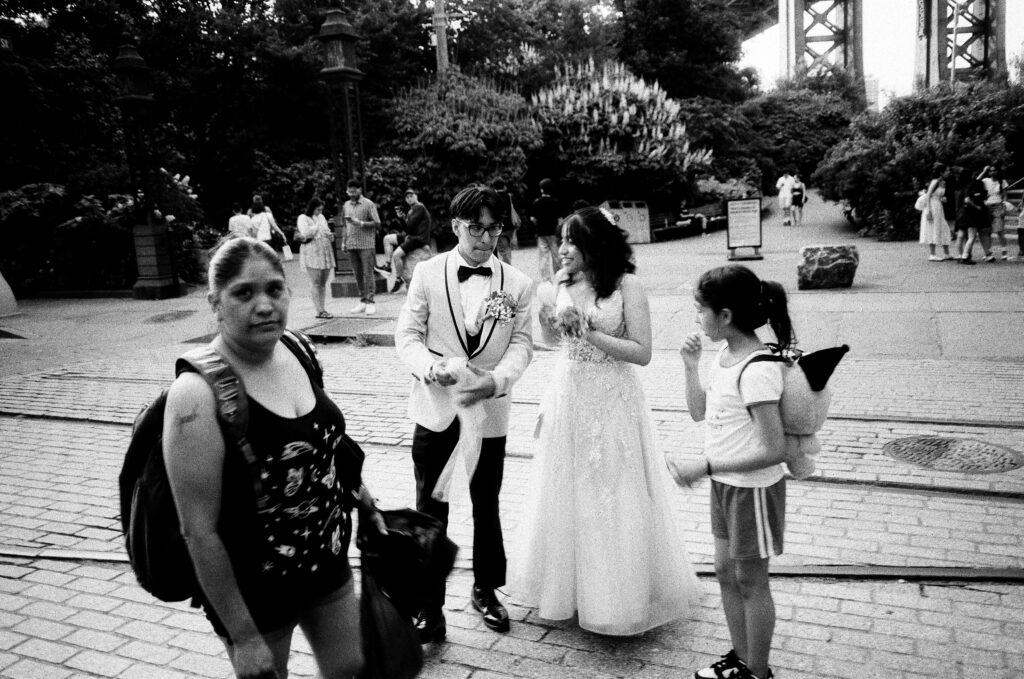
I have a growing collection of shots of people enjoying a special day, and/or presenting their idealized versions of themselves to the world.
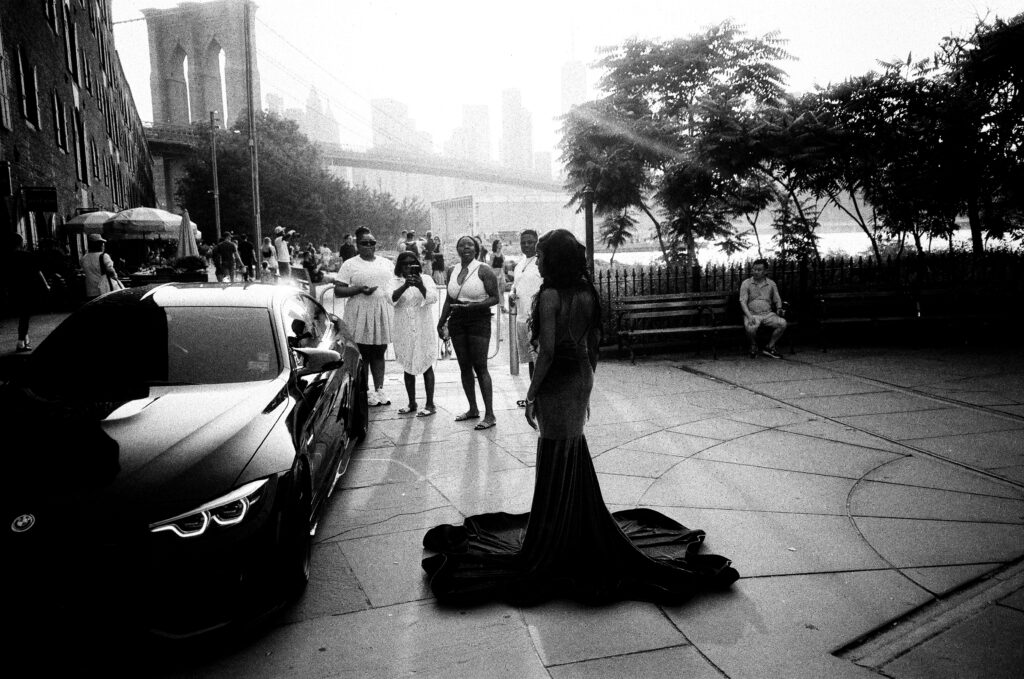
Rollei Blackbird 64 was very much an afterthought and only came up because I saw it in the fridge of a small boutique lab where I was dropping off film. I bought a roll on impulse without knowing much of anything about it. I figured “In for a penny, in for a pound” and it made it just under the wire at this year’s NYC Pride as the last emulsion I tried for this survey.
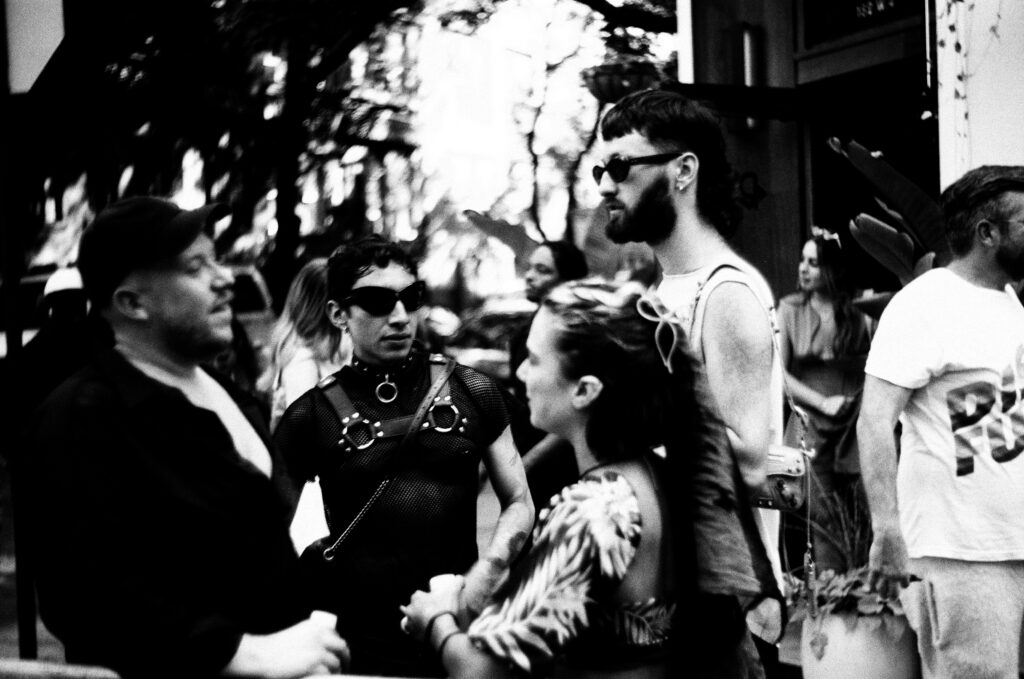
Rollei Blackbird is described as a ‘Creative’ film stock, and has a look that feels ‘expressionistic’ to me with really strong contrast and pretty fine grain. The blacks are so rich and deep it feels almost like they have a kind of dark ‘glow’ that feels quite distinctive.
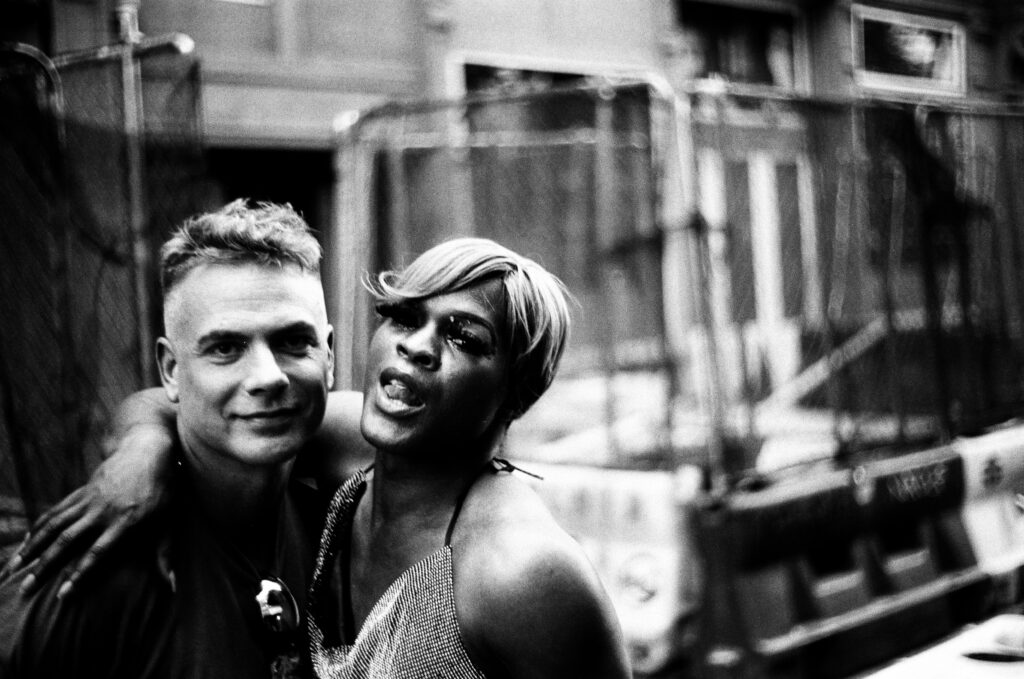
Loading a 64 ISO stock for street shooting felt challenging, especially as the Pride “After Party” was picking up steam. But I feel like I managed to pick my moments and stay in the limits of the ISO. That I came back not only with some keepers, but some real favorites, is a testament to what I think the potential of this film can be. Blackbird really says ‘film’ to me, but has a look all its own and doesn’t feel like an off-brand version of anything in the Ilford or Kodak lines.
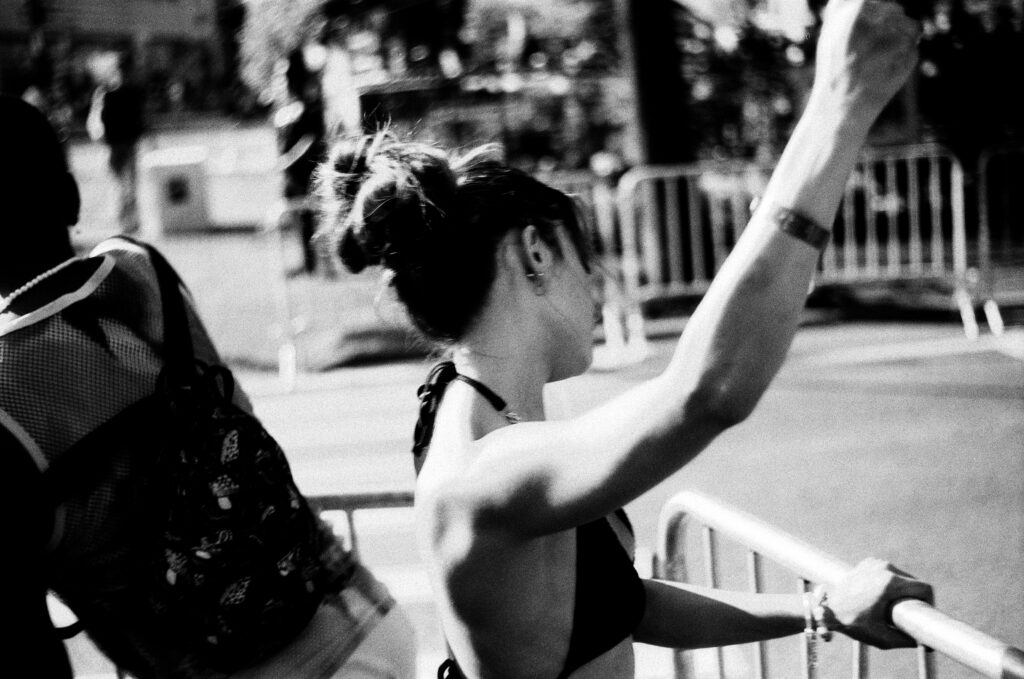
I really like Blackbird! It looks like it would be a really nice stock for shooting portraits or for something with a bit of a ‘fine art’ feel. I’m glad I found it!
Well now that really is it for Part 3 of my journey through the roster of the major brands. I look forward hearing your thoughts and feedback, and stay tuned for part 4, when I will explore higher ISO B&W films and what happens when pushing a variety of 400 ISO b&w stocks up to 2 stops.
Cover Image: PHOTO SHOOT, Leica M3, Leitz Summitar 50mm f2 with Yellow Filter, Ilford HP5
Share this post:
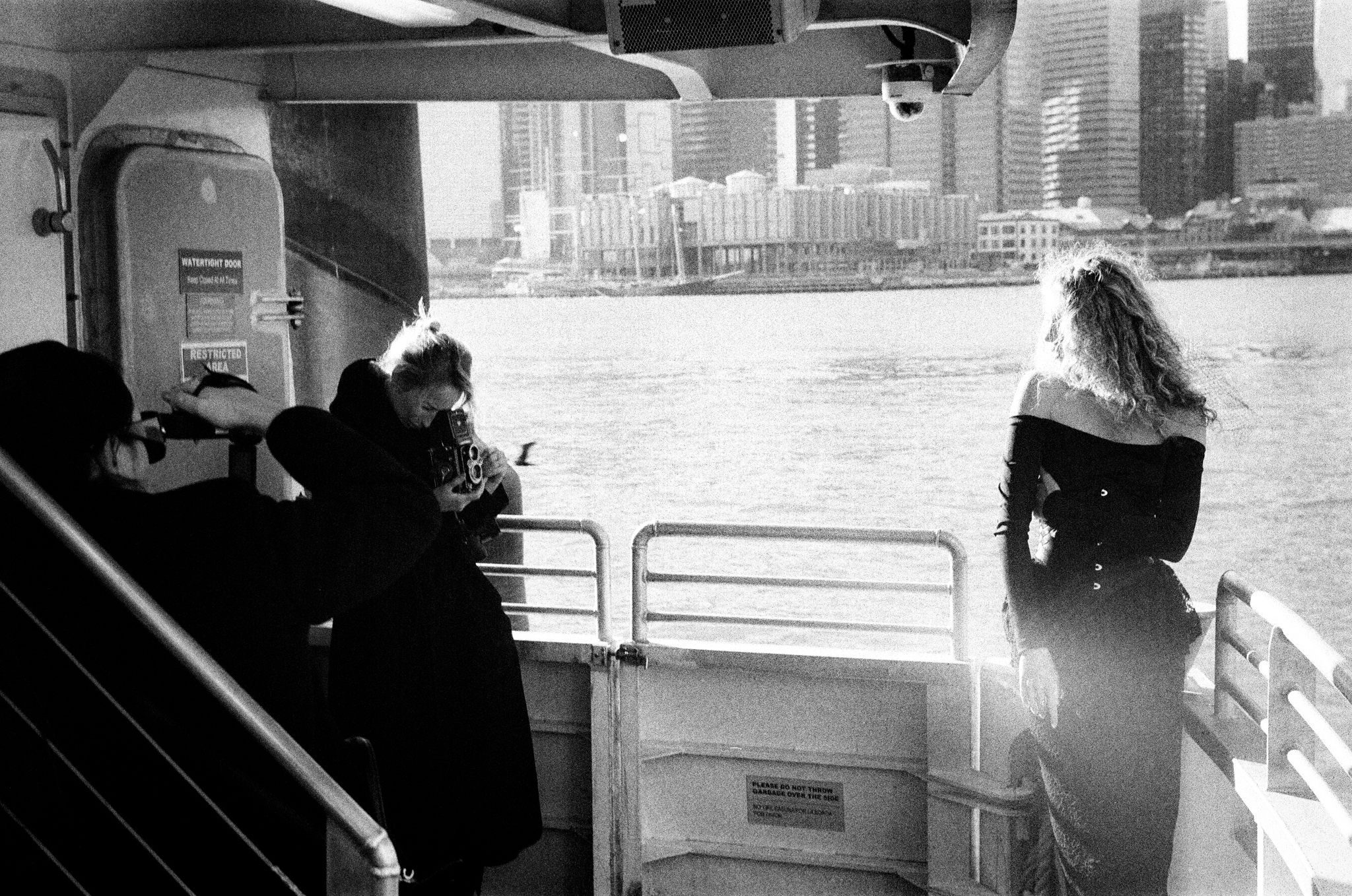
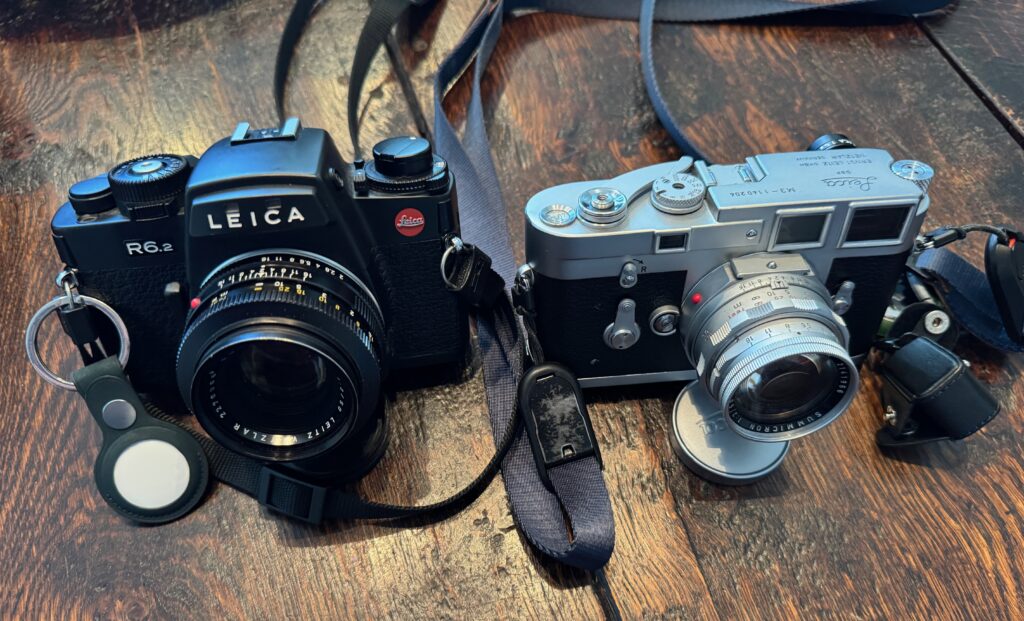

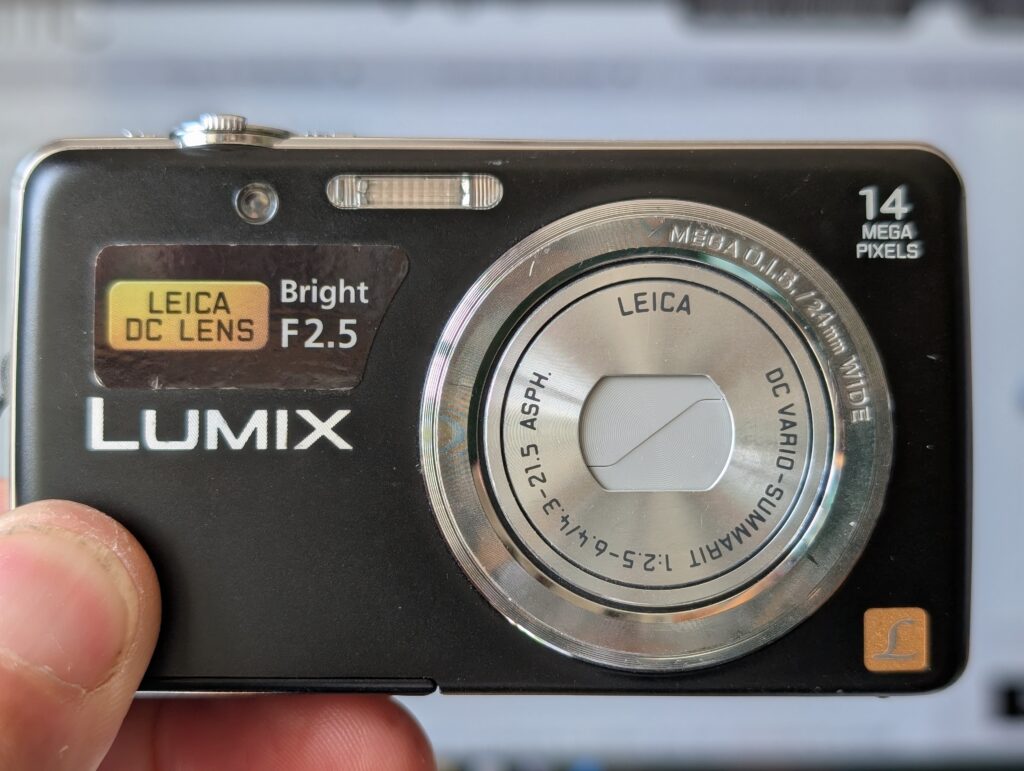
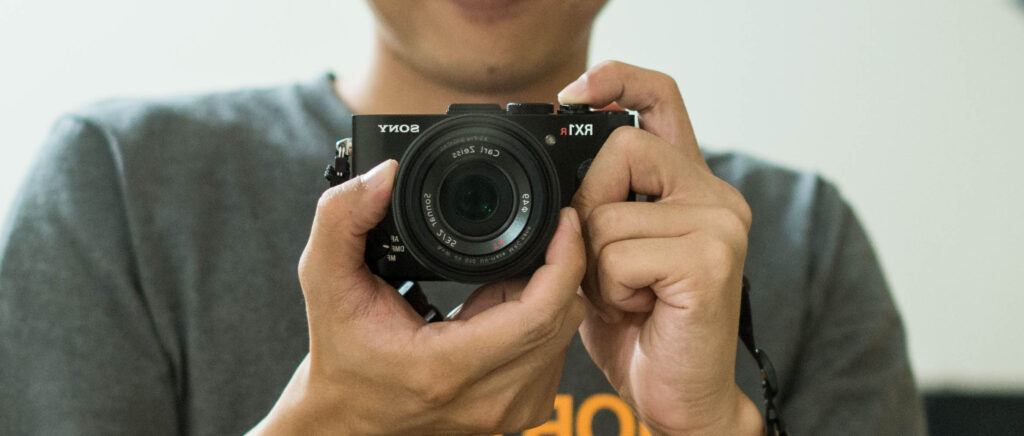

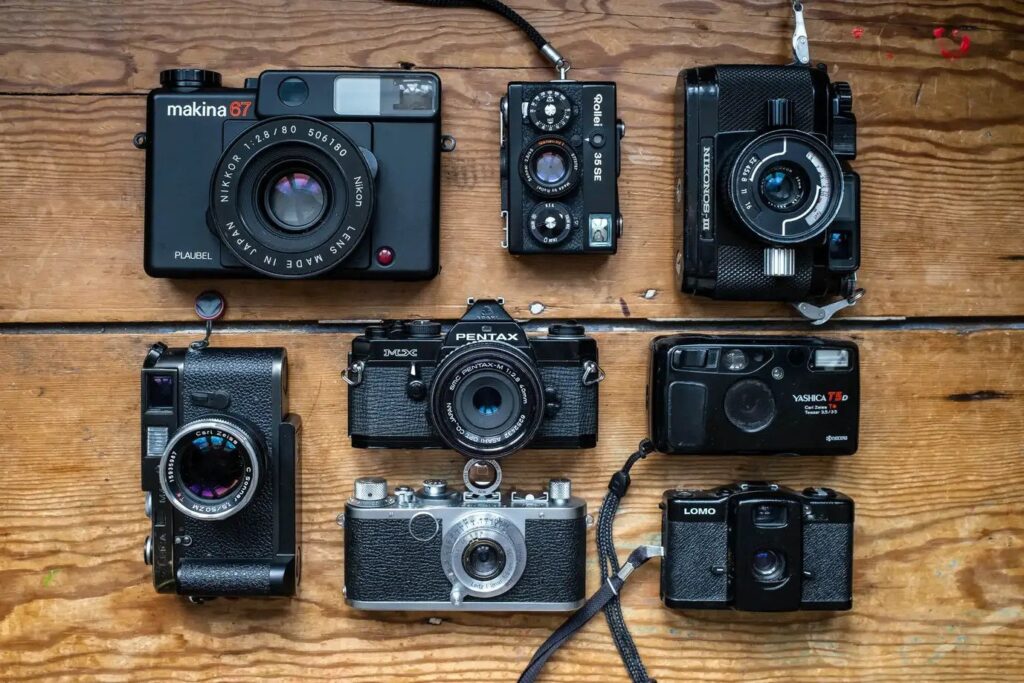
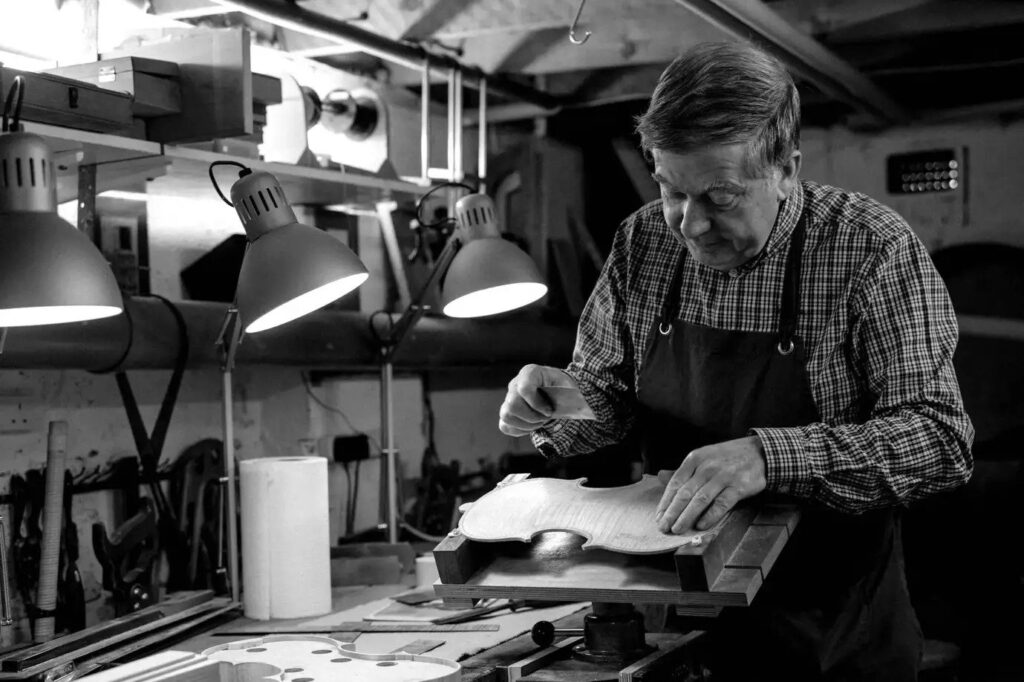
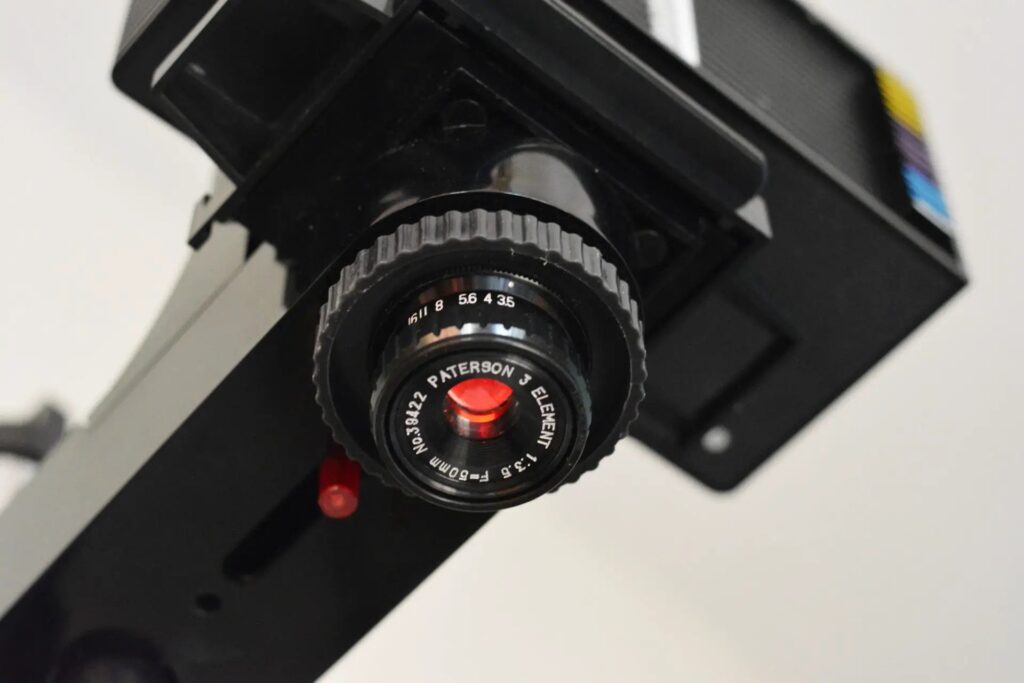
Comments
thorsten on A Journey into Darkness and Light, B&W Film Stocks, Part 3
Comment posted: 16/07/2025
Comment posted: 16/07/2025
Comment posted: 16/07/2025
Comment posted: 16/07/2025
jason gold on A Journey into Darkness and Light, B&W Film Stocks, Part 3
Comment posted: 16/07/2025
Kenmere 400 and 100 when it truly was better priced! Now Ilford HP5+. All Ilford films dry FLAT!
Focus on manual is easy! Except on waist level Rolleiflex and Hasselblood! Better still than auto focus! That feature great on small cameras, not on F.F. I don't bracket shots for focus anymore.No using ultra high speed aperture lenses!
Or many types of film, too much testing for development and exposure times! Box speeds a fairy tale Bravo!
Comment posted: 16/07/2025
Bob Janes on A Journey into Darkness and Light, B&W Film Stocks, Part 3
Comment posted: 16/07/2025
Comment posted: 16/07/2025
John Pemberton on A Journey into Darkness and Light, B&W Film Stocks, Part 3
Comment posted: 16/07/2025
I have always shot slower film unless I knew I was shooting inside, most my film work in the digital era is on Acros, TMax 100 (Plan B) then Delta 100 and Pan -F for specific applications. Another interesting stock to dabble with is Lomography Babylon which shoots at ISO 13. Stocks are running out, so I have been hoarding. Throw a back mist filter in front of it and you get a very interesting Noir quality to the experiment.
Comment posted: 16/07/2025
Ibraar Hussain on A Journey into Darkness and Light, B&W Film Stocks, Part 3
Comment posted: 16/07/2025
I really like the UFO shot double exposure - surreal and as a lot of impact
The blackbird looks lush !!!
Would like to see your portraits with it
Are you still using a lab for development and scanning ?
Comment posted: 16/07/2025
Comment posted: 16/07/2025
Comment posted: 16/07/2025
Comment posted: 16/07/2025
Comment posted: 16/07/2025
Comment posted: 16/07/2025
Comment posted: 16/07/2025
Gary Smith on A Journey into Darkness and Light, B&W Film Stocks, Part 3
Comment posted: 16/07/2025
Great series, thanks Scott.
Comment posted: 16/07/2025
David Pauley on A Journey into Darkness and Light, B&W Film Stocks, Part 3
Comment posted: 16/07/2025
I so enjoyed this continuation of your black and white film series. The Rollei blackbird shots from Pride are very special, also - a particular favorite of mine - the Quincaenera in front of the Croton spillway. (That billowy dress and the foaming waters!) I've never had the inclination to try Infrared films but really enjoyed reading about your experience with them; the shot of the black swimming pool beneath white trees seems especially impressive (if a bit creepy). More than anything I appreciate your openness in walking us through your process with each different emulsion. This is definitely a resource I will return to!
Comment posted: 16/07/2025
Geoff Chaplin on A Journey into Darkness and Light, B&W Film Stocks, Part 3
Comment posted: 17/07/2025
Comment posted: 17/07/2025
JC on A Journey into Darkness and Light, B&W Film Stocks, Part 3
Comment posted: 17/07/2025
Thanks for this review of B&W film material !
Among your shots i like the Kentmere 200 pics very much.
But i'm very pleased with your Fomapan 200 pics too.
Cheers, Jens
Comment posted: 17/07/2025